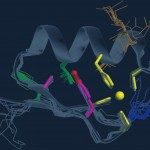Link to Pubmed [PMID] – 37525683
Link to DOI – 10.48327/mtsi.v3i2.2023.384
Med Trop Sante Int 2023 Jun; 3(2):
To attempt resolving this issue accurately, it was necessary to anchor our experimental approaches in the observations and pioneering work of our predecessors, notably Alphonse Laveran, Louis Parrot, Edmond and Étienne Sergent. The latter, among other things, had identified as natural hosts of leishmaniasis, rodent populations with which hematophagous telmophagous sand fly populations cohabited closely.When human populations emerged in these natural ecosystems, after the sedentarization of Homo sapiens, more or less important disturbances would have led to a transition of sand fly hematophagy, from zoophilia, to zoo-anthropophilia and anthropophilia.The creation of infrastructures that allow the breeding and integration into experimental groups of both holobiont sand flies and holobiont laboratory rodents (rats, mice, hamsters, etc.) remains crucial. With such infrastructures, it becomes possible to grasp and characterize the multilateral dynamic processes – mostly clinically silent – that account for the biogenesis of tissue and/or cellular niches protecting populations of Leishmania developmental morphotypes, including those ensuring host-to-host transmission, albeit in small numbers.Pour tenter de répondre le plus rigoureusement possible à cette question, il importait d’ancrer nos approches expérimentales aux observations et aux travaux pionniers de nos prédécesseurs, parmi lesquels Alphonse Laveran, Louis Parrot, Edmond et Étienne Sergent. Ces derniers, entre autres, avaient identifié comme populations naturellement hôtes de leishmanies, des rongeurs avec lesquels cohabitaient intimement des populations de phlébotomes hématophages telmophages. Quand ont émergé les peuples d’humains au sein de tels écosystèmes naturels, à la sédentarisation d’Homo sapiens, des perturbations d’amplitude variable se seraient traduites par une transition de l’hématophagie de ces phlébotomes, de la zoophilie à la zooanthropophilie et à l’anthropophilie. La création d’infrastructures où élever et intégrer dans des groupes expérimentaux, d’une part des phlébotomes holobiontes et, d’autre part des rongeurs de laboratoire holobiontes (rats, souris, hamsters, etc.) reste essentielle. Grâce à de telles infrastructures, il devient possible de saisir et caractériser les processus dynamiques multilatéraux – le plus souvent cliniquement silencieux – rendant compte de la biogenèse des niches tissulaires et/ou cellulaires protégeant des populations de morphotypes de Leishmania en développement, y compris ceux assurant la transmission d’hôte à hôte, bien qu’ils soient en petit nombre.

